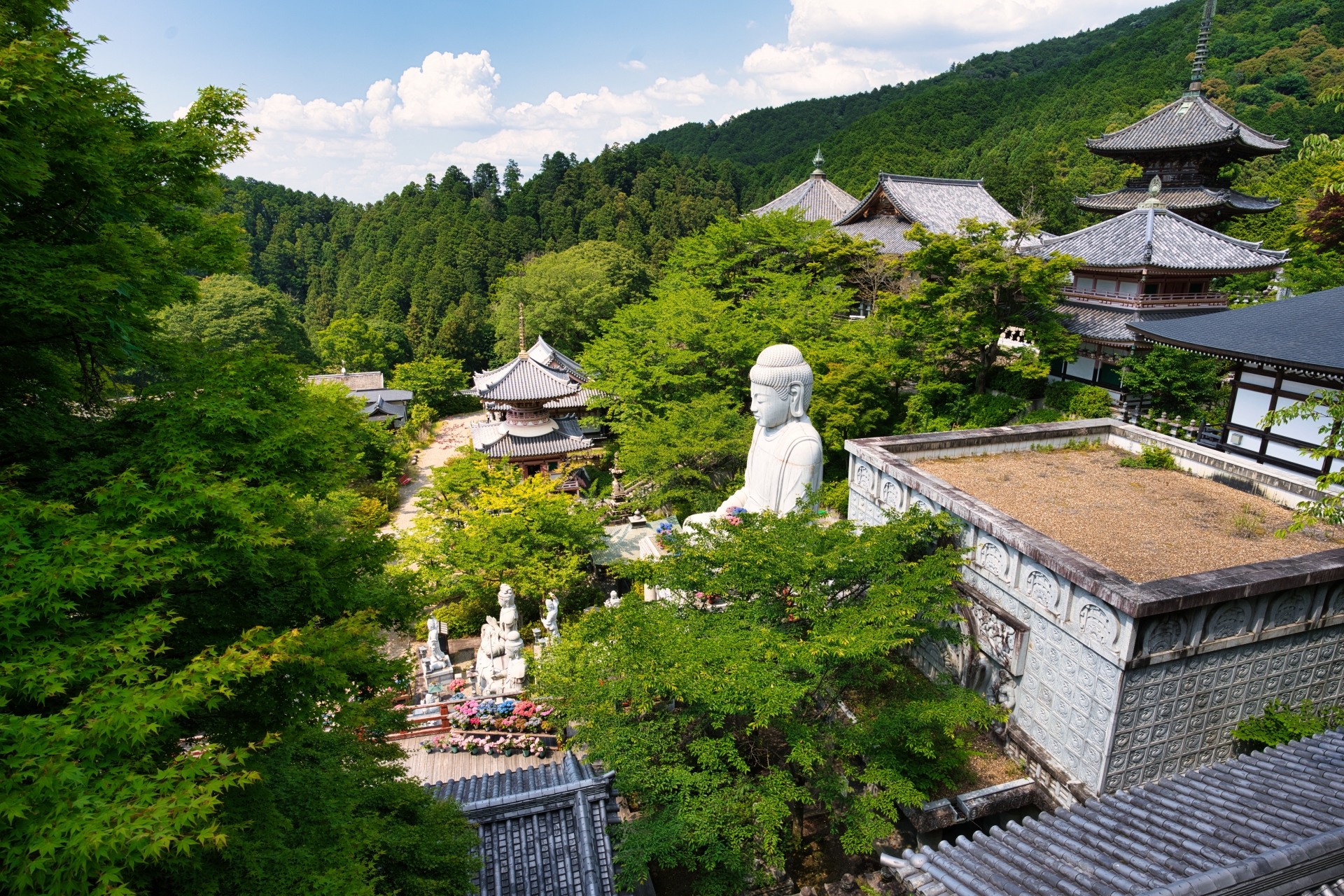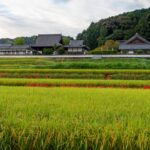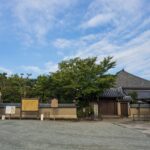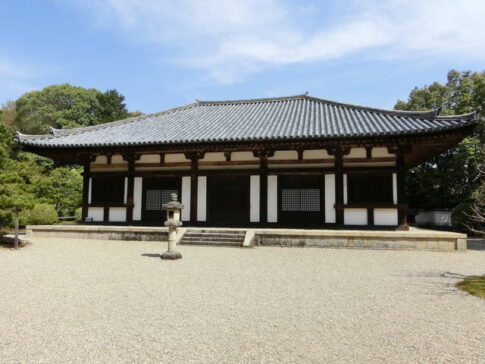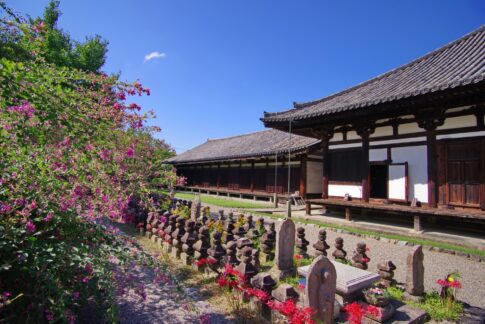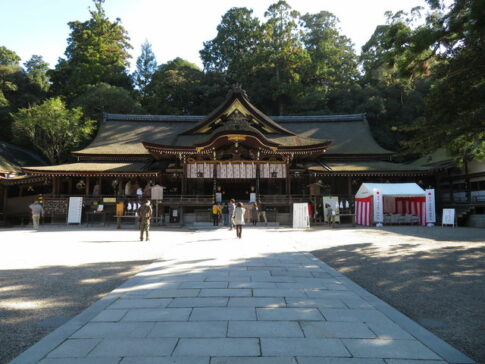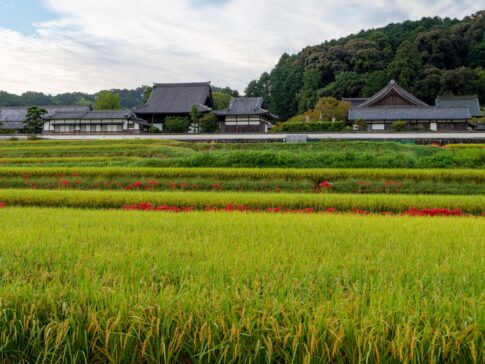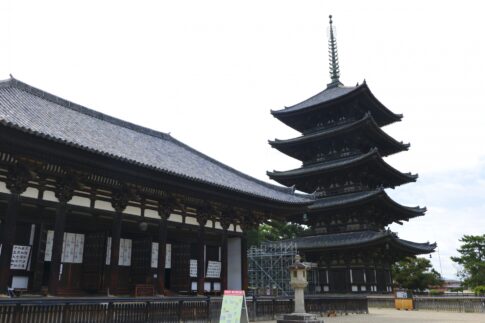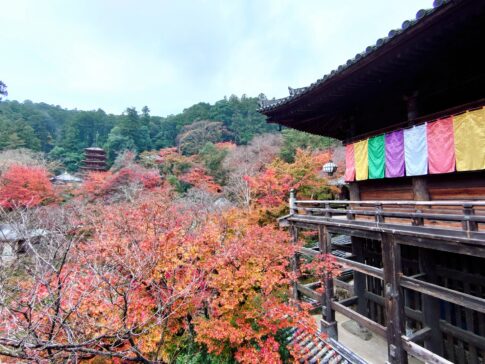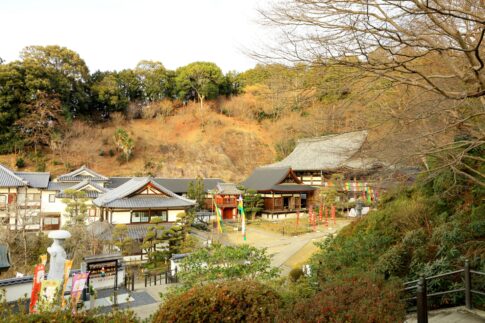Tsubosaka-dera is one of the important temple in Japan.
It is related to a ancient story that has been passed over.
If you are interested in Japanese history and ancient culture, this is nice place to visit.
What you need to know before visiting Tsubosaka-dera Temple
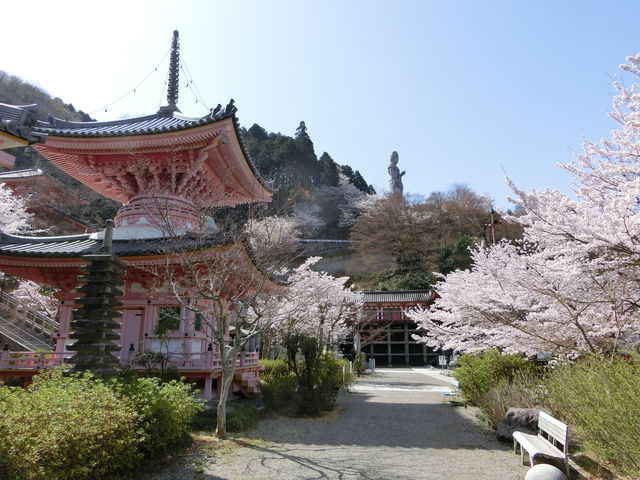
1. Basic Information
Tsubosaka-dera Temple is a peaceful temple with a stone Buddha from Jerusalem.
Tsubosaka-dera Temple in Takatori-cho, Nara Prefecture, stands on the Tsubosaka mountain, with Mt. Yoshino, a famous cherry blossom viewing spot, to the south and the Nara Basin of the Yamato Sanzan Mountains to the north in full view.
It is also known as the sixth temple of the Saigoku Sacred Sites of the West, and is visited by worshippers from all over Japan.
The temple is widely worshipped for its main deity, the Kannon (Goddess of Mercy) for the eyes.
The main deity of Tsubosaka-dera Temple is the Kannon, the Goddess of Mercy for eye diseases.
The name Tsubosaka-dera Temple became popular through the puppet play “Tsubosaka Reikenki,” which tells the story of a blind man, Sawaichi, and his wife, Osato, and is also known as the temple that protects people from eye diseases.
The temple stands on the mountain of Tsubosaka, with Mt. Yoshino, famous for its cherry blossoms, to the south and the Nara Basin, home of Manyoshu, the three mountains of Yamato, to the north, in full view.
It is said that the temple was founded in 703, when Benki Shonin, a monk of Genkoji Temple, was practicing asceticism on the mountain and kept his favorite crystal vase in a hermitage on the hill.
2. History of Tsubosaka-dera Temple
According to the “Nanbokana-ji Koro Den” in the temple collection, the temple was founded in 703 by Benki Shonin, a monk of Gango-ji Temple, who was practicing asceticism in this mountain.
Many tiles from the Fujiwara Palace period have been excavated from the temple grounds. Later, the temple became a temple of prayer for the Emperor Motomasa.
In the Heian period (7947), the temple was listed together with Hase-ji Temple as a fixed-period temple (847), and was visited by many aristocrats.
In particular, Sei Shonagon, in her “Pillow Book,” mentions the temple as one of the most sacred temples, saying, “The temples Tsubozaka, Kasagi, and Horin…” The temple is also mentioned as one of the most sacred temples by the Left Minister Fujiwara no Michikazu.
There is also a record that Fujiwara no Michinaga, Minister of the Left, stayed at this temple on his way to Yoshino (1007).
Around this time, Shin’ko Shonin of Kijimadera Temple revived Tsubosaka Temple, and the temple became a major center of the Kijimabo school of the Shingon sect (Tsubosaka-bo school), and along with the belief in the 33 sacred sites of the Kannon, the temple flourished greatly.
The temple was destroyed by fire several times, but was rebuilt each time with the concerted efforts of mountain priests.
However, the temple was caught in the upheavals of the Northern and Southern Dynasties and the Warring States period, and with the downfall of the Ochi clan, which was protecting the temple at the time, Tsubosaka-dera also began to decline.
At one time, the temple had a large complex of 36 halls and more than 60 monks, but only the three-story pagoda and a few other monks remained on the temple grounds.
In modern times, Tsubosaka-dera Temple was restored under the patronage of Honda Toshihisa, a retainer of Toyotomi Hideyoshi’s younger brother Hidenaga, who became lord of Takatori Castle, and the Honda clan and the Uemura clan, which continued to rule the area until the abolition of the han system in the Meiji era.
At the beginning of the Meiji period (1868-1912), a puppet play “Tsubosaka Reikenki,” the story of a married couple, Sawaichi, a blind man, and his wife Osato, was performed for the first time, and the name Tsubosaka-dera became widely known through kabuki, storytelling, and ronikyoku.
After the war, Tsubosaka-dera contributed to social welfare activities, and in 1961, the temple established Japan’s first nursing home for the blind and elderly, “Jibo-en,” as the fruit of many good intentions.
Even today, the temple continues to contribute to social welfare activities in various parts of Japan.
3. Highlights of Temple Treasure
- Sen with phoenix design (Important Cultural Property, deposited at Nara National Museum)
Asuka period, 7th century
Sen with phoenix design, said to have been excavated at Oka-ji Temple.
It beautifully and powerfully depicts a phoenix with its wings outstretched on both sides and its tail curled up, standing on its feet in the clouds at the edge of the sky.
Phoenixes are imaginary birds, and similar representations can be found on mirrors of the Tang dynasty, Baekje patterned sen, and tiles of the Unified Silla Dynasty.
The same size sen (tenjinbun sen, which represents a kneeling celestial being) has been handed down in Okadera Temple, and it is presumed that these were decorating the Buddhist altar in the Buddhist hall of Okadera Temple at the time of its foundation.
- Sanzon Brick Buddha
This is a half-carved image of a Buddha with three images on a square brick face.
The composition is centered on a seated Nyorai (seated in a zenjingin position), with standing Bodhisattvas on either side, a bodhi tree in the background, and a canopy and two flying heavenly bodies above.
Brick Buddhas with similar compositions have been excavated in large quantities at the Kawaradera Urayama site in Nara, and those with a raised rim have been excavated at Tachibana-ji in Nara.
Along with extruded Buddhas, brick Buddhas were widely produced from the Hakuho period to the Nara period as wall decorations for temples and kitchens and as nemmochibutsu (Buddhist prayer Buddhas), and their origin can be traced to the wall decorations of the Thousand Buddha Caves in China and India.
4. Relationship between Tsubosaka-dera Temple and Asia
In the 1960s, Tsubosaka-dera Temple was involved in a project to help leprosy patients in India. Since then, the temple has been involved in many projects in India, including educational assistance such as grants for local school management and scholarships, and various international exchanges such as regional development assistance.
Many of the stone sculptures on the grounds of Tsubosaka-dera Temple are the result of these Japan-India exchanges.
Summary
As mentioned above, Tsubosaka-dera temple is an attractive place while it is not so famous.
When you go to Nara, please stop by here too!
